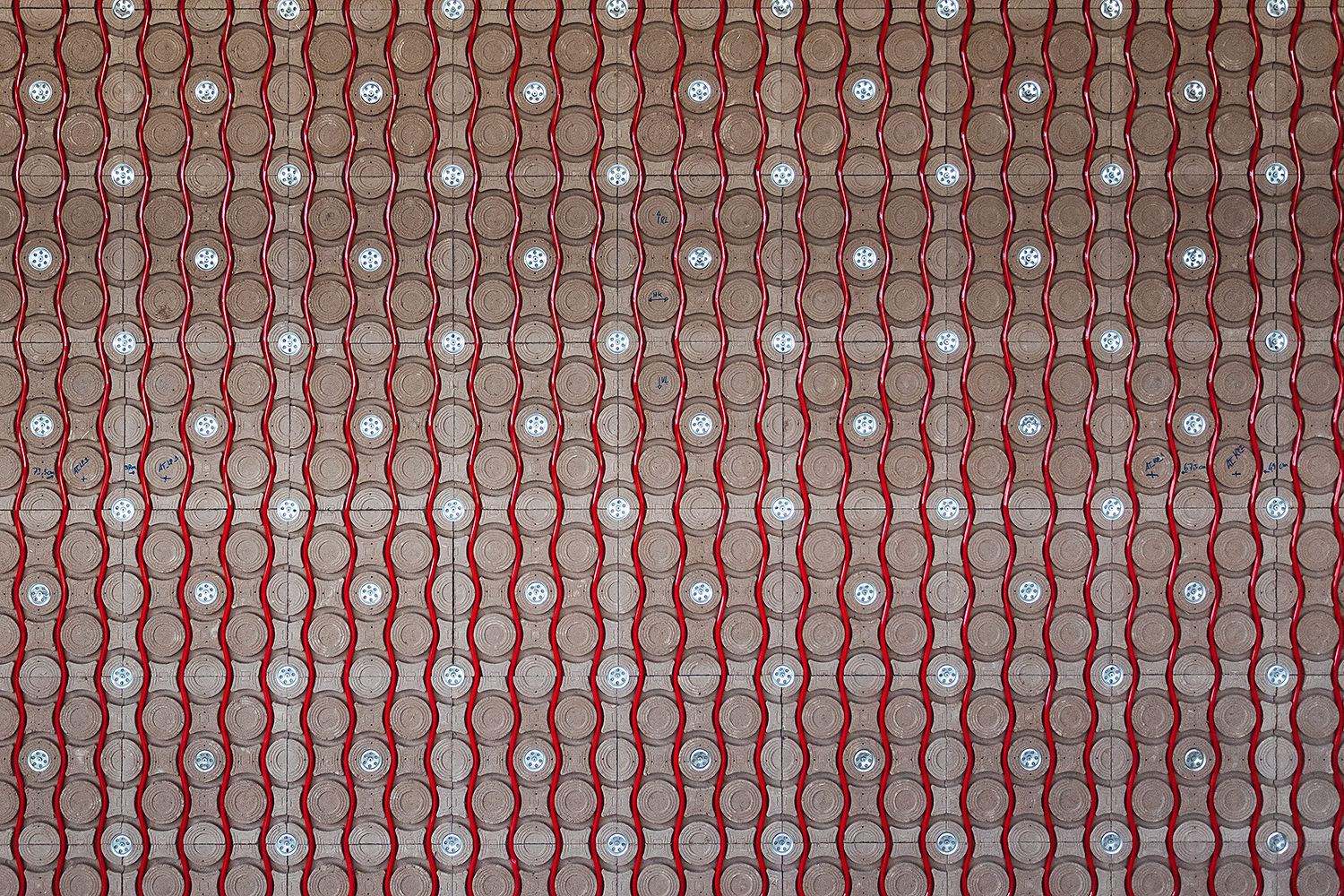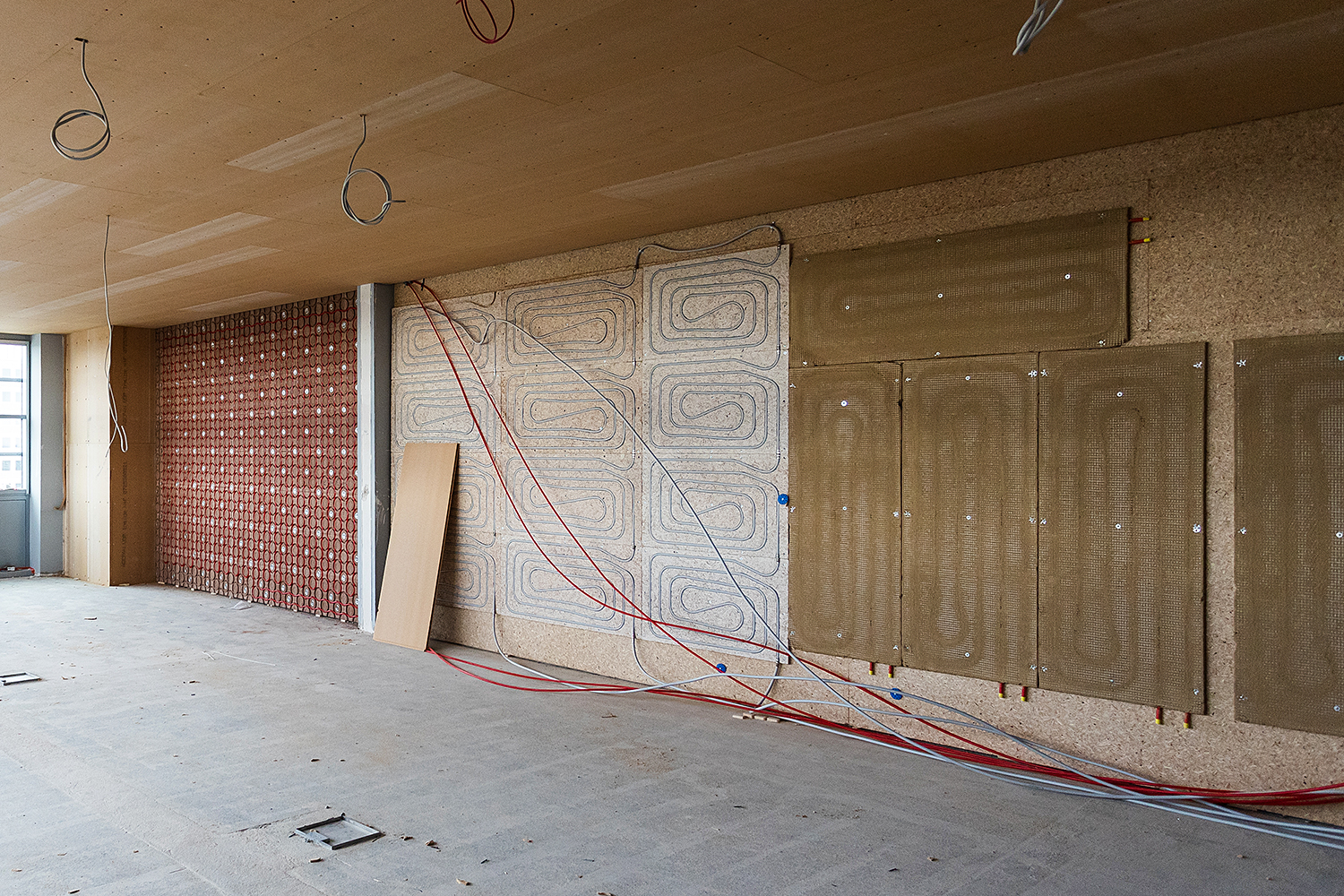Picture of the month: The clay wall as an energy store From the Institute for Building Climatology and Energy in Architecture
Still you can take a look behind the scenes. Before the staff at the Institute for Building Climatology and Energy in Architecture (IBEA) fill the partition wall on the tenth floor of the “Architower” on Mühlenpfordtstraße with clay plaster, patterns of various pipes are revealed. Red capillary tubes snake up the wall, grey hoses meander next to them. The IBEA installs a total of six different clay air-conditioning systems in its rooms. One of them can be seen in our picture of the month October.

Looking at one of the six clay climate systems in the Institute for Building Climatology and Energy of Architecture. Picture credits: Max Fuhrmann/TU Braunschweig
The tenth floor of “BS04” is gradually becoming a real laboratory. Four test walls with clay climate systems are being implemented in the building and evaluated in daily office operations. In order to optimise the indoor climate, the IBEA is relying on natural materials and traditional construction methods, among other things, during the conversion. For example, straw clay and clay blocks are used, as well as construction sheep’s wool for insulation.
The passive behaviour of the walls is supported by active temperature control systems, which are installed in various earthen building materials or on low-pollutant wood-based panels, so-called ESB panels. Finally, the walls are given various clay plasters. “These can absorb up to six times more moisture in the range of a comfortable room climate than a conventional gypsum plaster,” says Tobias Pörschke, research associate at the IBEA. Depending on the internal hygrothermal loads, this could increase the passive contribution to regulating the indoor climate, which could consequently lead to energy savings.
Less is more
By varying the wall and ceiling structures, clay climate systems and types of clay plaster, there are 15 different constructions to be examined on 500 square metres. This allows the staff to take measurements on layer temperatures or reaction times of the systems in combination with the construction, for example. The scientists will also connect the system to a heat pump and a photovoltaic system on the roof.

Four test walls with clay climate systems are implemented at the Institute for Building Climatology and Energy of Architecture (IBEA). Picture credits: Max Fuhrmann/TU Braunschweig
In their real laboratory, the researchers want to investigate how excess energy from the PV generator can be stored in the heavy clay walls. But they also want to analyse clay building products as heat and moisture regulators in detail. To do this, the IBEA team is using energy meters (heat, cold and electricity) in the clay climate systems and temperature and humidity sensors at different depths in the clay walls. One of the goals is to find out to what extent earthen walls are suitable for generating a robust operating optimum – without installing large-scale ventilation and air-conditioning technology.
When the wall is soon plastered, there will be no sign of all the pipes and hoses of the various air-conditioning systems. Only at the back will the staff be able to open a flap for the control unit to record the measurement data.
